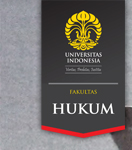Abstract
‘Meira Paibi’ is an all-women grassroots resistance movement in Manipur (India). It emerged in 1980s against state atrocities committed under the ambit of the Armed Forces Special Powers Act, 1958 (AFSPA). Their ‘contentious politics’, protest rallies and demonstrations, have gained significant mainstream attention. Often than not, Meira Paibi’s image is interpreted as symbol of women’s empowerment. Women’s visibility in the public domain is not a new phenomenon in Manipur. Manipur had witnessed a number of women’s uprisings both during and post-colonial period. To conclude women’s engagements in the public domain as a sign of empowerment or passive victims in the face of socio-political undercurrents in the society is simplistic and a narrow frame. They are by no means passive victims. Meira Paibis exercise open resistance to state oppression, but also employ ‘everyday resistance’ towards other discriminatory practices. In everyday resistance, agency is less visible, hidden and usually inconsistent. This paper attempts to present everyday aspect of Meira Paibis. Their experiences and change agency are, however, diverse reflecting the heterogeneity within the movement.
Bahasa Abstract
'Meira Paibi' adalah sebuah gerakan perlawanan akar rumput yang seluruhnya adalah perempuan di Manipur (India). Gerakan ini muncul pada tahun 1980-an untuk menentang kekejaman negara yang dilakukan di bawah lingkup Undang-Undang Kekuatan Khusus Angkatan Bersenjata, 1958 (AFSPA). 'Politik kontroversial' mereka, unjuk rasa protes dan demonstrasi, telah mendapatkan perhatian utama yang signifikan. Sering kali, gambar Meira Paibi ditafsirkan sebagai simbol pemberdayaan perempuan. Visibilitas perempuan di ranah publik bukanlah sebuah fenomena baru di Manipur. Manipur telah menyaksikan sejumlah pemberontakan perempuan baik selama dan pasca periode kolonial. Menyimpulkan keterlibatan perempuan di ranah publik sebagai tanda pemberdayaan atau korban pasif dalam menghadapi arus bawah sosial-politik di masyarakat adalah hal yang sederhana dan sempit. Mereka sama sekali bukan korban pasif. Meira Paibis melakukan perlawanan terbuka terhadap penindasan negara, tetapi juga melakukan 'perlawanan sehari-hari' terhadap praktik-praktik diskriminatif lainnya. Dalam perlawanan sehari-hari, agensi tidak terlalu terlihat, tersembunyi, dan biasanya tidak konsisten. Tulisan ini mencoba untuk menampilkan aspek keseharian Meira Paibis. Pengalaman dan agensi perubahan mereka, bagaimanapun juga, sangat beragam yang mencerminkan heterogenitas dalam gerakan tersebut.
References
Akoijam, B. (2005). Another 9/11, another act of terror: the 'embedded disorder' of the AFSPA. Sarai Reader 2005: Bare Acts. CSDS, 481-491.
Arunkumar, M., & Arun, I. (2009). The Transcendental Role Of Women In Manipur History. In H. D. Sharma, New insights into the glorious heritage of Manipur (pp. 618-159). Akansha Publishing House.
Baruah, S. (2005). Durable Disorder: Understanding the Politics of Northeast India. Oxford University Press, New Delhi.
Galtung, J. (1996). Peace by Peaceful Means. Sage Publications.
Loitongbam, B. (February 2007). Northeast India's Experience. International Commission of Jurist, Eminent Jusrist Panel: Terrorism, Counter Terrorism and Human Rights.
Mukherjee, K. (2014). India's Fractured Northeastern Frontier: An Overview. Aisa-Pacific Review, 21(2), 149-171.
Nepram, B. (2010). Gender Based Violence in Conflict Zones: Case Study of India's Northeast. Center for Equity and Inclusion.
Ningombam, S. (2011). Mapping Repressive Practices against Women in the Meitei Society. Alternative Perspectives: Economy, Polity, History and Culture, V(Special Issue), 30-39.
Parratt, J. (2005). Wounded Land: Politics and Identify in Modern Manipur. Mittal Publications.
Scott, J. C. (1985). Weapons of the Weak. Yale University Press.
Sharma, H. S. (2011). Conflict and Development in India's North-Eastern State of Manipur. The Indian Journal of Social Work, 72(1), 5-22.
Sircar, M. C. (1984). Feminism in a traditional society: Women of the Manipur valley. Shakti Books.
Thangjam, H. (2005). Armed-conflict and Women's Well-being in Manipur. Eastern Quarterly, 3(3), 117-127.
Recommended Citation
Salam, Bidyalaxmi
(2023)
"The Meira Paibis of Manipus: Locating Agency,"
Indonesia Law Review: Vol. 13:
No.
3, Article 2.
DOI: 10.7454/ilrev.v13n3.5
Available at:
https://scholarhub.ui.ac.id/ilrev/vol13/iss3/2

